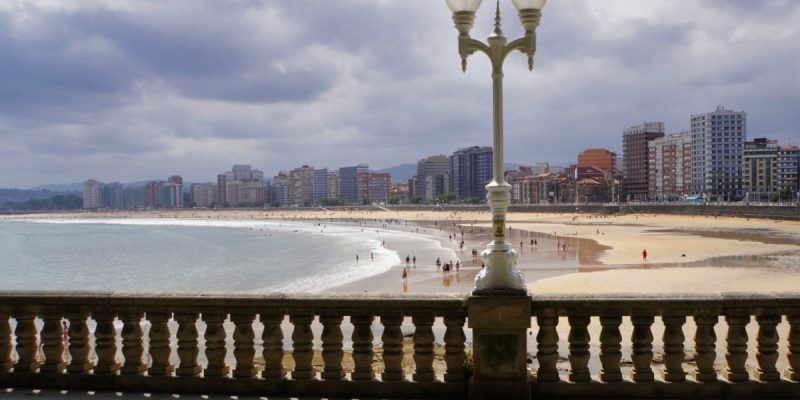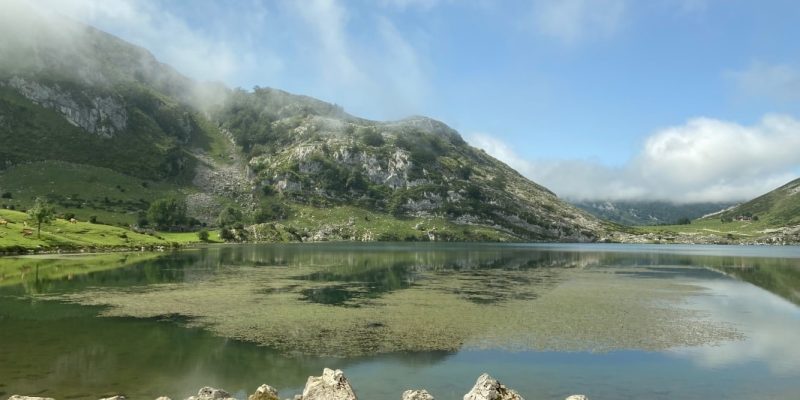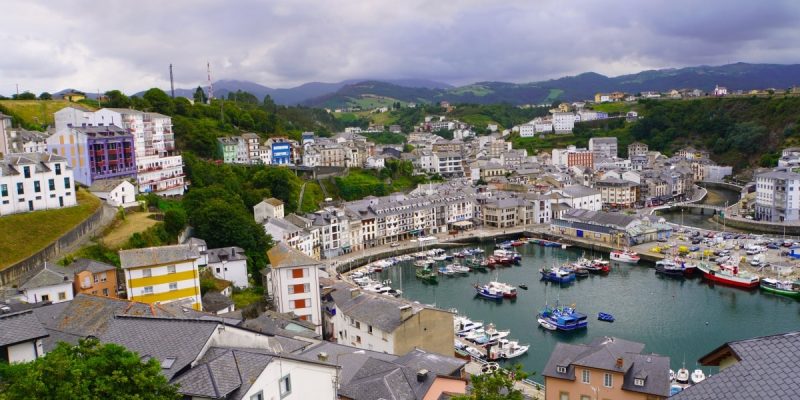Asturias, an enchanting region in northern Spain that delights visitors from all over the world with breathtaking nature, cultural richness and warm hospitality. Asturias, also known as “Green Spain”, offers unique landscapes, delicious gastronomy and a rich history to discover.
The coast stretches for 350 kilometers and offers wild cliffs, golden beaches and picturesque bays. Hikers can enjoy a variety of trails through lush forests and majestic mountains. The famous “Camino de Santiago” also passes through Asturias, offering pilgrims an unforgettable experience.
Asturias is less crowded than other tourist hotspots in Spain, making it a perfect destination for travelers seeking relaxation in a peaceful and natural environment.

The region is known for its misty forests, which give it a mysterious atmosphere. The Picos de Europa Natural Park, a UNESCO Biosphere Reserve characterized by imposing peaks, deep gorges and green valleys, is one of the most popular destinations in the region.
Asturias also has a spectacular coastline with some of the most beautiful beaches in Spain, from small hidden coves to wide sandy beaches. The ideal place for a relaxing summer vacation.
Asturias is a culinary mecca that makes the hearts of gourmets beat faster. Delicious seafood, including fresh oysters and succulent lobsters, straight from the Atlantic, and the famous “Fabada Asturiana”, a hearty bean stew is a must-try. The regional cider “Sidra”, which is poured into the glasses from a great height in the traditional manner, is an excellent accompaniment.
Tips for a great vacation in Asturias

Oviedo is the capital of Asturias. The inhabitants of the city have the beautiful name "Ovetenser".

In the green Asturian countryside right on the coast lies Gijón, a city steeped in history and vibrant with culture that attracts all those seeking the charm of northern Spain.

We took the bus for an excursion to the Picos de Europa National Park. If the reports about the area are to be believed, it is one of the most beautiful landscapes in the region. So much for the theory…….

As the bus winds along the coastal road, passengers are offered an irresistible view of the idyllic harbour nestled in a bay. Luarca, often referred to as the "White City" on the "Green Coast", exudes an aura of serenity and traditional beauty.

What could be better than sitting relaxed on a train, letting the landscape pass you by and listening to the rattle of the wheels. Clearly, a train that travels as a rolling hotel! Traveling in northern Spain on the Transcantábrico, the Costa Verde Express, taking excursions in the region and falling asleep in your own…
Travel information
Arrival
By plane
The airport of Asturias is located 47 km from the capital Oviedo, 40 km from Gijón and 13 km from Avilés. There are flights to numerous national and international cities.
By Train
There is a very good connection from Madrid.
By car
The region is easily accessible by the A6 and A8 highways.
Best time to travel to Asturias
Asturias is located along the entire Spanish Cantabrian coast and therefore benefits from a humid temperate climate with frequent rainfall and mild temperatures year-round. Snow is rarely seen unless you head to the mountains. During the summer, the temperature usually stays around a pleasant 25°C. Due to the cooling breezes, summer along the coast is often a few degrees cooler than inland.
The weather can be very local, which means that weather forecasts are not as reliable as in other regions of Spain. For example, it can be sunny inland and cloudy on the coast, or vice versa.
El “orbayu” is a characteristic drizzle that is frequent, especially in summer, and covers the landscape with fine raindrops.
Spring (March to May):
Daytime highs are between 15°C and 20°C, with cooler nights. Rainfall decreases compared to winter, but rainfall can still occur, especially in March and April.
Summer (June to August):
Summer is the driest season in Asturias, but compared to other Spanish regions it can still rain occasionally. Maximum daily temperatures range between 20°C and 25°C.
Fall (September to November):
Temperatures start to drop, with highs between 15°C and 20°C in September and continuing to fall until November. Rainfall increases in the fall, especially in October and November.
Winter (December to February):
Daytime highs are between 10°C and 15°C, with cooler nights. Winter is the wettest season in Asturias, with the highest number of rainy days. Snowfall can occur in the mountains, offering opportunities for winter sports.
Language
In Asturias, besides the official language Spanish, Asturiano (Bable) is also spoken. This is the original language of the former Kingdom of Asturias and León. Although Asturiano is not an official language, it is protected and supported by the regional authorities. It is still widely spoken, especially in rural areas, and is often used by Asturians in everyday life.
The influence of Asturiano on local Spanish is clearly noticeable. Many local expressions, idioms and words have their origin in this ancient language. The use of Asturiano is not only a matter of identity and cultural affinity. It is also a sign of appreciation for the rich history and traditions of the region.
While Spanish dominates as the main language in administration, education and public life, Asturiano lives on as an important part of the region’s cultural heritage. Support and maintenance of this original language help preserve and strengthen Asturias’ unique identity. Travelers visiting Asturias can get a fascinating glimpse of this linguistic diversity and experience firsthand the importance of preserving cultural heritage.